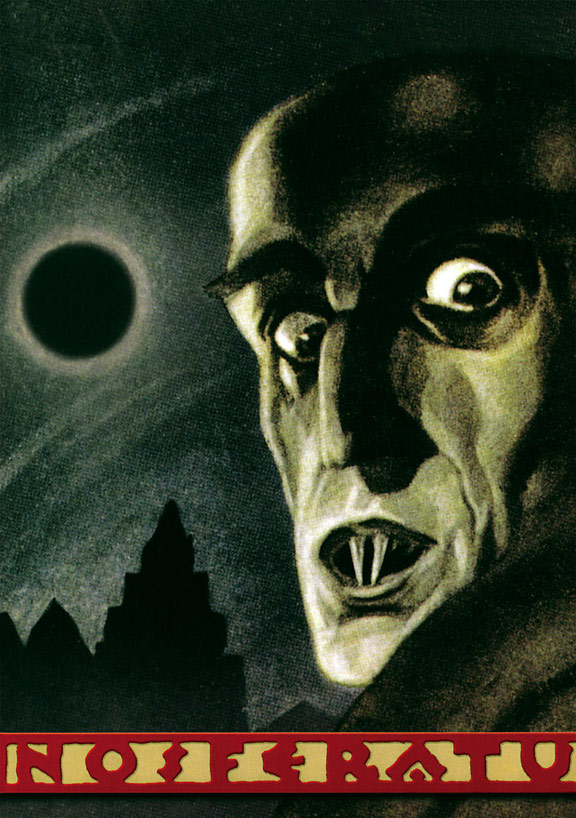
It’s always tricky reviewing really old movies, like Le Voyage Dans la Lun, or The Great Train Robbery, or later stuff like The General and in this case Nosferatu. As they are at this point over or almost a hundred years old, and are rather dated nowadays.
But does that stop them from being good?
Especially considering films like Nosferatu, and Le Voyage Dans la Lun laid the very foundations that The Godfather and The Phantom Menace would later stand on. I think Nosferatu is better constructed than say Bram Stoker’s Dracula, but it isn’t as easily watchable, hence the conundrum.
But let’s get onto it and see.
THE STORY
Vampires apparently have an interest in real estate, and when one decides to move next door…
ALL. HELL. BREAKS. LOOSE.
THE GOOD
It’s always fascinating for me to look at old things, as they may provide insight into their current iterations. With silent films it is quite easy to see the origins of things we take for granted, like cross cutting; now i’m not sure if Nosferatu was the first to do so (in fact i highly doubt it) but there are moments where the film uses sophisticated methods to communicate its story.
One instance where Greta Schröder calls out for her husband, and its implied that Count Orlok hears it, as he looks back towards Schröder. Mundane to a modern audience for sure, but fascinating when taken into context of how quickly the language of film evolved.
Another achievement that Nosferatu can still hold is its creation and maintaining of a suitably eerie; most notably Max Schreck is incredibly creepy, with his make up and physical performance transcending the dated visual effects of the film:

do you want this man knocking on your door? At any hour?
Lastly, the film has 2 set pieces involving the titular vampire that are still affecting; with a creative use of shadow and slow tension making Orlok’s attacks still affecting to watch.
THE BAD
Despite all that Nosferatu gets right, ultimately it’s a very old movie; and it definitely shows it’s age in a number of ways.
The various camera setups in the film are incredibly rudimentary and the editing despite its sophistication in some instances is very slow. Full body master shots represent the core of the cinematic language of the film, and those shots are held onto for a noticeably long time. This is likely because there wasn’t anything to cut to, as close-ups are almost nonexistent and were likely never considered.
The film’s visual problems don’t stop at the lack of close-ups, rarely (if ever) does the camera pan and certainly never pushes in or moves out for dramatic effect. These coupled with the simple editing, and wide angles has the movie come off as incredibly archaic.
Now that might sound unfair, but considering it was only 3 years later that Battleship Potemkin’s famous Odessa Steps sequence thoroughly clobbered Nosferatu‘s rudimentary grasp on cinema, with its montage editing style, close-ups, and camera moves i don’t think that is an overly unfair criticism to make when considering a modern audience members expectations.
Apart from the visuals, the acting is very vaudevillian and very exaggerated; with some moments coming off as incredibly silly, like Hutter laughing into the air and throwing away a very unmenacing book, or Knock unsurprisingly turning out to be a psycho and a creep.
Finally, while the film is quite short at 94 minutes it does sag a bit.
THE UGLY
I’m not going to lie and say that Nosferatu is somehow still scary in 2017; it’s certainly creepy at times, and it’s certainly a well-preserved and fascinating look at a bygone age. However i think it’s still worth a look, even for someone who isn’t studying film; and that’s because of how enduring its images are, and how far-reaching its influence is.
While it’s not without its faults, ultimately i find it entertaining, and i would hope that others can get something out of the experience.

OUT OF FIVE